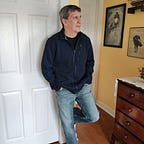Why Do We Believe in Conspiracy Theories?
The answer may be found in elementary school
Pizzagate. Satanism. Pedophilia. Voter fraud. Lies, cheating … and murder. At some point, Democrats have been accused of all these evil doings and more by rabid Republicans who believe, with little or no evidence, that their political counterparts are up to their necks in Washington conspiracies.
But why are such outrageous claims so easy for some to believe? Why are some minds so gullible — and easily manipulated — into believing outlandish conspiracy theories?
To find the answer, I believe you have to go back to the earliest days of primary school.
Over the past fifteen years that I’ve been teaching special education in a small Upstate New York urban district, I have naturally observed countless breakdowns in understanding. Routinely, most children rush through their work with one imperative in mind: get it done. Children for the most part view school as a series of obstacles to overcome; thus they take the easy way out whenever possible to find the “right” answer. Get the answer correct— get the teacher off your back. And let’s face it, educators: we love hearing our own words parroted back to us, because it means the children were listening and remembering what we said.
However, what should be discussed frequently with students at all grades is the reality that answers to questions always fit into one or more of the following three categories: the right, the wrong, and the sensible. Recognizing the sensibilities of one’s conclusions is one of the first steps in a critical analysis of a problem. And encouraging critical thinking in the elementary grades is crucial to later intellectual development and success in life.
Not all sensible answers are necessarily correct. And some right answers may, on the surface at least, seem improbable and even nonsensical. The difference is that a sensible response shows that the learner is accounting for common sense while also seeking verifiable proof.
Take the case of a third-grade student with special needs whom I worked with five years ago. We’ll call her Mary. Mary announced to me one day in private that she knew a math fact: 1 +1 = 11.
“Is that answer correct?” I asked.
“Oh, yes,” she whispered conspiratorially.
“But do you think it’s sensible?” When I saw the blank look on her face, I asked a follow-up question: “If one person gets on a bus and then one more, do you think there would be eleven people on the bus?”
Her face screwed up in thought over this puzzle. I decided to draw her to the side and sit her down at my teacher table alone. I brought out a handful of Unifix Cubes, a common mathematical manipulative found in elementary school classrooms, and placed a handful on the table before her.
“Show me,” I said.
With the confidence of one who receives daily if not hourly booster shots of esteem-raising praise by well-meaning teachers, Mary picked up two cubes from the pile and promptly tapped them on the table. “Eleven!” she declared.
“Count them,” I said.
“One…two…” She stopped, a flicker of uncertainty crossing her face.
“What’s the matter?” I asked.
“It’s two!” she exclaimed.
Indeed. For someone her age and with her diagnosed cognitive disabilities, it may have been something of a breakthrough to realize that you can be so wrong about something that felt so right.
We discussed the sensibility of her answer, which provided the opportunity to review the concepts of more and total. It was not the right time, developmentally speaking, for me to introduce Mary to place value yet, as she did not have sufficient understanding of basic numeracy yet, but it is always the right time to model challenging one’s beliefs.
After solving two more simple addition problems with the cubes, I wrapped up the impromptu math lesson by asking Mary, “If a bus carrying only two kids picked up four more, could there possibly be one hundred children on the bus?”
She giggled. “No! One hundred is a big number and four and two are too small!”
Her answer may have been simplistic but it was sensible. Best of all, it was a small step down the road to critical thinking.
Learning to ask the right questions is key to developing a skeptical mind. It is perhaps the best tool in our arsenal to defend against the absurdities of ungrounded thought and fallacious logic.
Questioning our assumptions and beliefs is the absolute bare minimum we should expect of ourselves and our fellow citizens.
The voter fraud conspiracy centered around the 2020 Presidential Election is an example of erroneous thinking. For it to be even remotely true, we must accept as sensible that millions of votes were miscounted in favor of Joe Biden on machines fraudulently rigged by corporations that pulled the wool over every election officials’ eyes in all fifty states.
Many election officials were themselves Republican and yet still expressed faith in the overall accuracy of the election. Notice the complaints in the counting were only aimed at so-called “Blue states” where Trump narrowly lost. Further, if fraud of this magnitude occurred, convincing evidence for it must exist. Yet not a single judge in America chose to overturn a single vote.
This is 1 + 1 = 11 thinking. Yet unlike a young child who has yet to grasp basic numeracy, adults should be intellectually curious enough to ask the three questions about their beliefs. And hold themselves accountable for their logic.
If we give students a free pass on their thinking in school, it will only set them up for critical thinking failure later in life.
